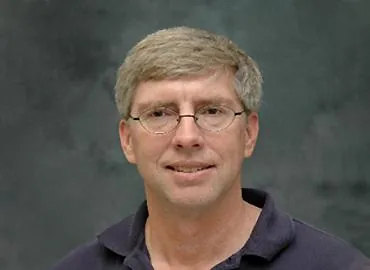
CITA's Professor Norman Murray Earns Prestigious Fellowship from the American Astronomical Society
2025-01-14
Author: Jacques
Exciting news from the astronomical community: Professor Norman Murray, a distinguished faculty member at the Canadian Institute for Theoretical Astrophysics (CITA) at the University of Toronto, has been named a 2025 Fellow of the American Astronomical Society (AAS). This prestigious recognition comes in honor of his “seminal contributions to our theories of chaos in the solar system, including planet formation and evolution; and for pioneering new methods for studying the physics of black hole accretion and the effects of stars and supermassive black holes on galaxy formation.”
The Significance of the Fellowship
The AAS, founded in 1899, is a prominent international organization representing professional astronomers, educators, and even amateur enthusiasts. Each year, the society acknowledges only a select few—this year, 24 members were chosen for their extraordinary achievements and service, illustrating that less than 0.5 percent of the society's membership can claim this honor. Recipients are celebrated for original research, innovative contributions to astronomical techniques, significant educational efforts, and valuable public outreach.
Professor Murray's Career Accomplishments
Professor Murray’s outstanding career is marked not just by this latest accolade but by a host of prestigious awards, including the Dannie Heineman Prize for Astrophysics in 2022 and his distinctions as a Fellow of the Royal Society of Canada in 2021 and a Fellow of the American Association for the Advancement of Science in 2020. His body of work has made a significant impact on our understanding of the universe, particularly with regards to the complex dynamics of celestial bodies.
Mentorship and Contribution to Education
Beyond his research achievements, Murray has played a crucial role in shaping the next generation of astrophysicists. He has mentored over 50 postdoctoral fellows and countless graduate students, many of whom are now leading figures in the field themselves. This highlights not only his commitment to scientific advancement but also to education, preparing young scientists to tackle the mysteries of the cosmos.
Looking to the Future
As the world of astronomy continues to evolve, Professor Murray’s work stands as a beacon of innovation and excellence—a reminder that the universe still holds many secrets to discover. Does this recognition signal the dawn of new breakthroughs in our understanding of the cosmos? Only time will tell!



 Brasil (PT)
Brasil (PT)
 Canada (EN)
Canada (EN)
 Chile (ES)
Chile (ES)
 Česko (CS)
Česko (CS)
 대한민국 (KO)
대한민국 (KO)
 España (ES)
España (ES)
 France (FR)
France (FR)
 Hong Kong (EN)
Hong Kong (EN)
 Italia (IT)
Italia (IT)
 日本 (JA)
日本 (JA)
 Magyarország (HU)
Magyarország (HU)
 Norge (NO)
Norge (NO)
 Polska (PL)
Polska (PL)
 Schweiz (DE)
Schweiz (DE)
 Singapore (EN)
Singapore (EN)
 Sverige (SV)
Sverige (SV)
 Suomi (FI)
Suomi (FI)
 Türkiye (TR)
Türkiye (TR)
 الإمارات العربية المتحدة (AR)
الإمارات العربية المتحدة (AR)